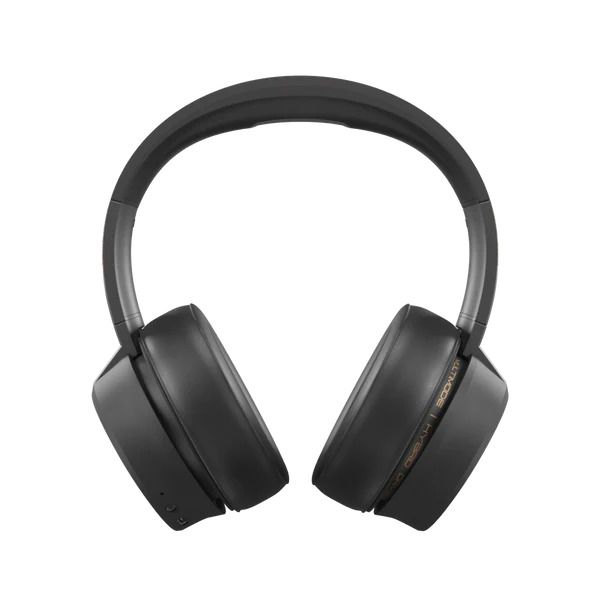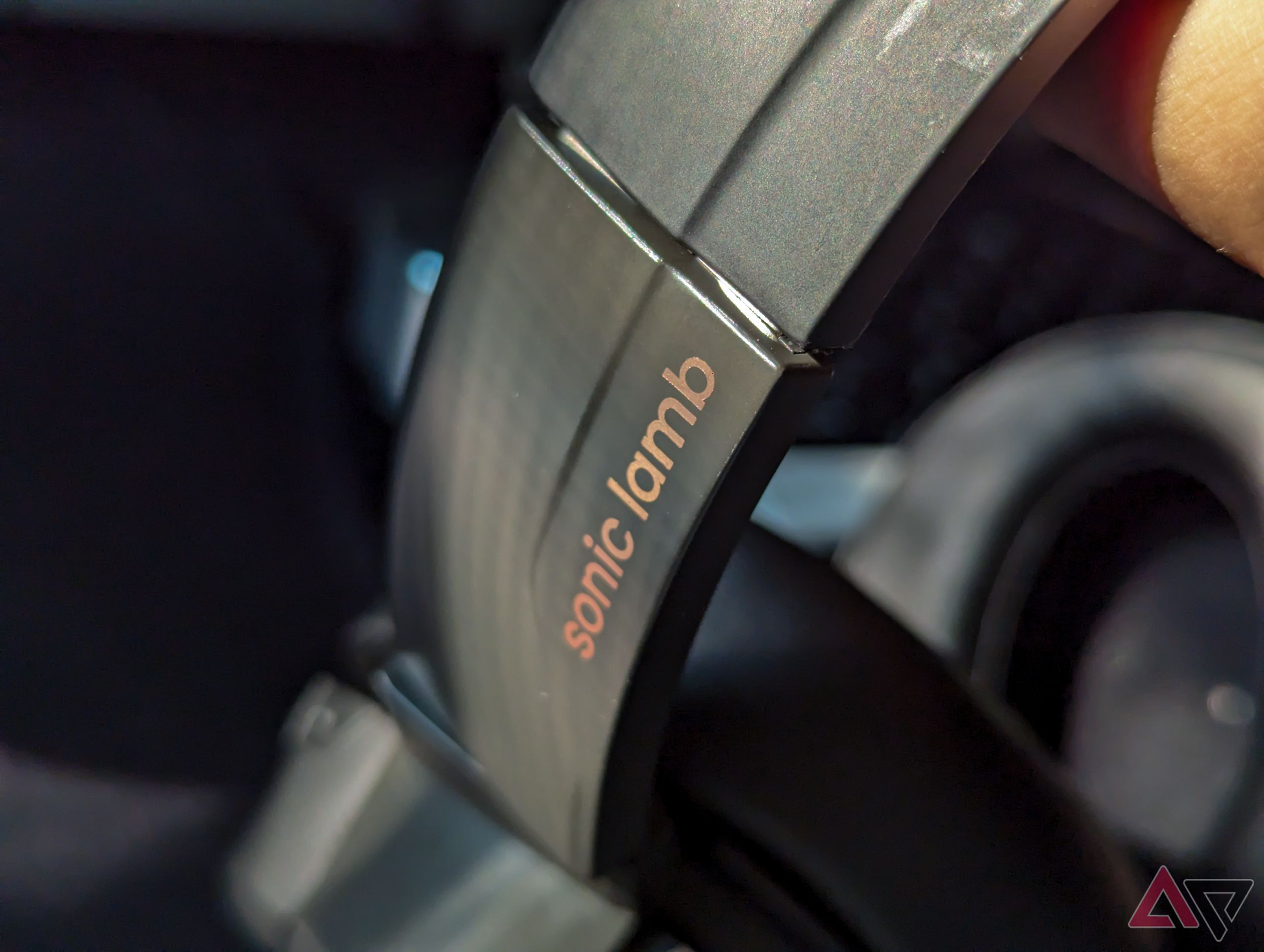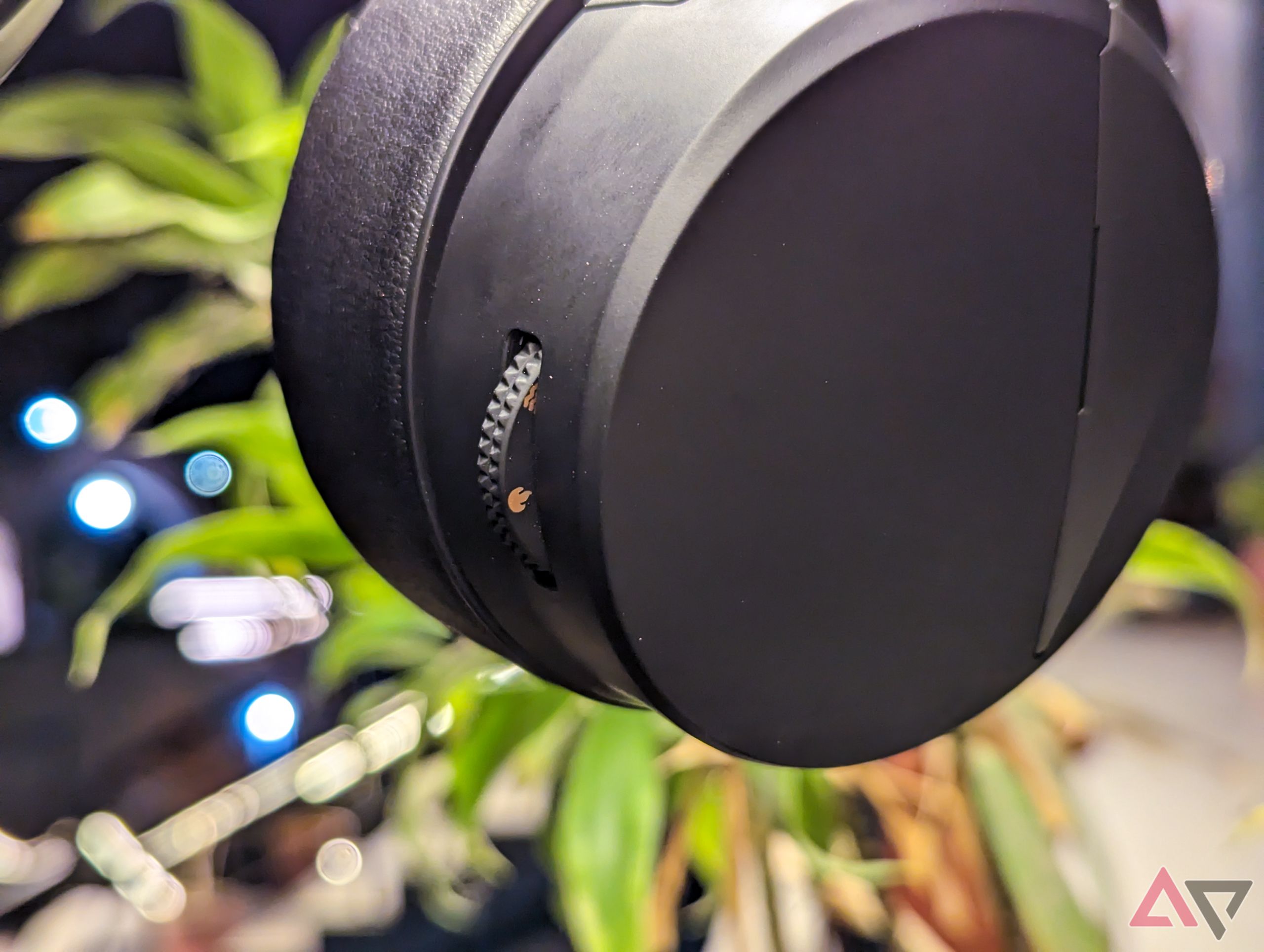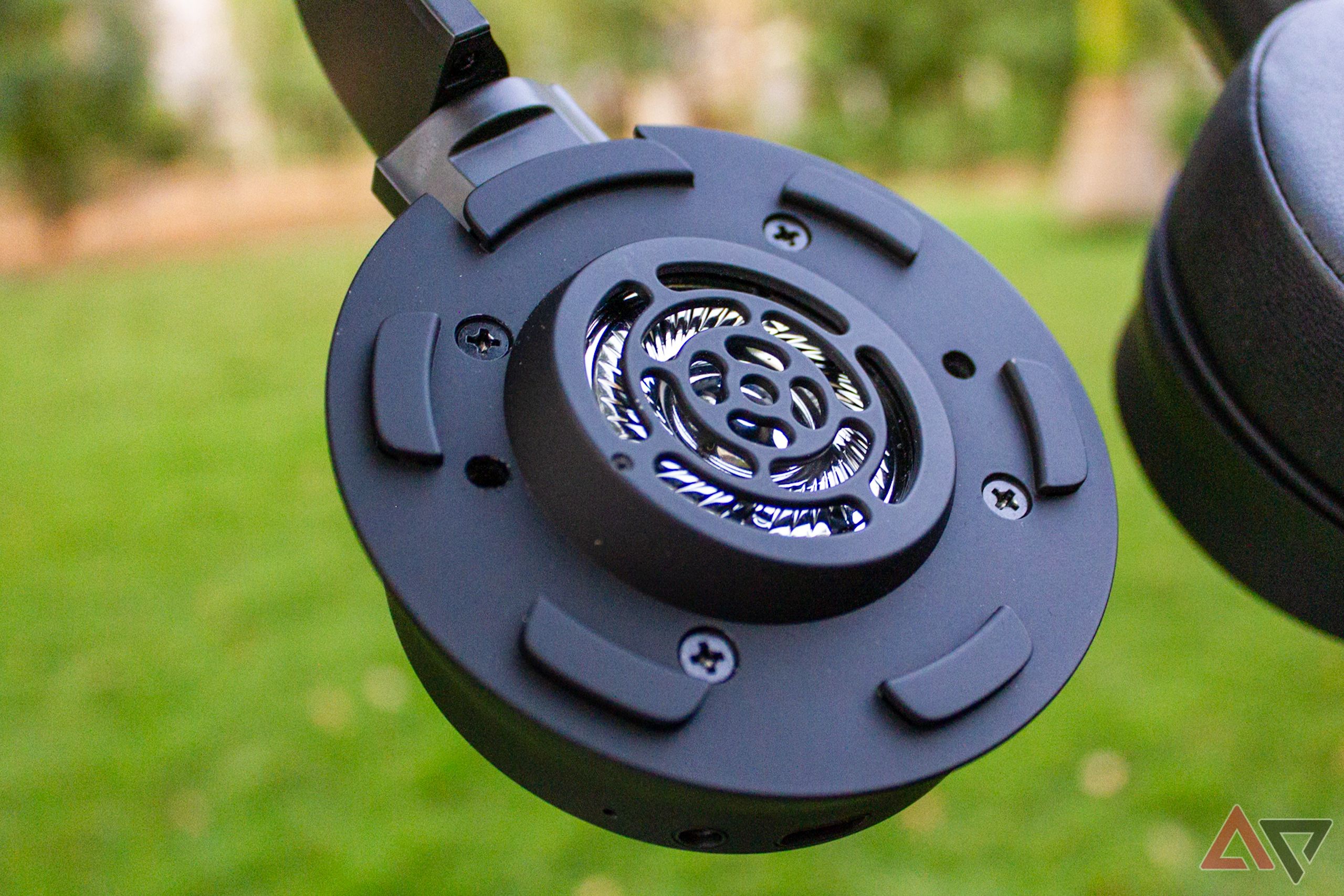Life as a bass head in an audiophile community chasing the ideal flat frequency response curves from all kinds of headphones. Switch to even the best wireless headphones, and suddenly the community starts preaching lossiness and how you’re not listening to music as intended. A couple of enthusiastic engineers in India decided to defy the norm and create wireless headphones with stellar bass response and the best wireless connectivity tech for maximum convenience. The result lives up to the brand name — Sonic Lamb — and feels like walking around with an invisible eight-inch bass tube strapped to your head.

Sonic Lamb
$240 $300 Save $60
Sonic Lamb is the emerging brand’s maiden headphone, promising a concert-like listening experience with a dual-driver configuration designed to deliver tangible and audible bass, but at an upper-midrange price. These over-ear headphones offer the best wireless connectivity codecs, backed by strong battery life as well.
- Immersive audio with strong low-end response
- Inconspicuous design with subtle indicator LED
- Carrying case and detachable boom mic included
- Supports hi-res audio codecs
- Missing multipoint and ANC expected at the price
- Heavy body with unconventional over-ear earpads
- Mushy buttons with unconventional placement
- Mic doesn’t play well with video conferencing tools
Price, availability, and specifications
You’re paying for the uniqueness
The Sonic Lamb are the company’s first and only headphones with a sticker price of $276, but the first 1,000 units are selling for a discounted $204. That is a steep ask for what looks like standard over-ear wireless headphones, especially when you can buy well-regarded, conventional models like the Audio-Technica ATH-M50xBT2 or Sony’s flagship WH-1000XM5 headphones with class-leading features for around $350.

Sony WH-1000XM5 review: The ANC headphones to beat
Class-leading ANC, now in a prettier package
These headphones already have RoHS, FCC, UKCA, and EU CE certification and will be available on Amazon US later this year. For now, the brand offers international shipping.
Specifications
- Brand
- Sonic Lamb
- Battery Life
- 20 hours with the bass cranked
- Bluetooth
- v5.1
- Noise Cancellation
- No
- Microphones
- 2
- Weight
- 320g + 315g carrying case
- Colors
- Black, white, gray
- Supported codecs
- SBC, AAC, Qualcomm aptX, aptX HD, aptX Adaptive
- Foldable
- No
- Charging type
- USB-C
- Multipoint
- No
- Battery charge time
- 2 hours
- Carrying case
- Included
- Frequency range
- 5 to 24,000 Hz
- Driver size
- 40mm dynamic drivers with 27mm impulse driver
What I like about the Sonic Lamb
Bass for days
Right from the unboxing experience, which uses paper and other sustainable materials, you know you have a premium headphone on hand. The headphones ship with a brown hard-shell carry case with a grab handle and mesh pocket inside for the charging cable and detachable boom mic. The headphones liberally use soft-touch plastics, and pleather is only seen on the earcups because the headband cushion uses a soft polymer material. Length adjustment is on smooth sliders, and it feels incredibly premium, too.
Although the included documentation is more textual than visual, the Sonic Lamb headphones have intuitive volume controls and one multifunctional button for power/play/pause. The inconspicuous status LED and two onboard mics are also well-concealed to the untrained eye. Once you slip these headphones on, you’ll find a mode dial under the right earcup, offering four-step adjustment for the impulse driver’s involvement in your listening experience.
Audio is where these headphones shine, and starting with the woofer driver switched off in Hear mode, acoustic and vocal tracks like Hotel California by The Eagles benefit from the 40mmm dynamic driver’s conventional V-shaped response with crisp highs and mids. I noticed the treble representation struggles at higher volume, but they get plenty loud at 60%. The earcups ensure sound leakage is minimal, too. The sound stage feels congested, and element separation isn’t amazing, but the stereo separation is the saving grace. That said, the headphones sound quite ordinary with the impulse driver switched off.
Crank the dial to the Feel mode, which wakes the impulse drivers, and you instantly notice a slightly reverby-y bass response that elevates the low end in tracks like Makeba by Jain and Heat Waves by Glass Animals. That’s because the driver transfers physical impulses to your skull through the earpads while also moving air like a conventional sub.
The Sonic Lamb call the next step Immersive mode, and that’s as far as I would suggest cranking the bass because it delivers a surprisingly woody sound and serious immersion for movies, hip-hop, reggae, and metal. I enjoyed this the most in Catastrophist by Trivium, Hey Mama by Black Eyed Peas, and certified hood classics like Still D.R.E. or One Day by UGK. The amplified lows in this mode teeter on excessive, but it retains a modicum of definition and doesn’t steamroller other frequencies, thanks to the dual driver configuration.
The final Beast mode lets the woofer operate unfettered, visibly quaking the earcups. Sonic Lamb recommends this mode for gaming, but I found the closed-back design detrimental to the reverberation of the super-boomy lows. In short, Sonic Lamb deliver the advertised “eargasmic” experience, unlike any other headphones you might have used. The bass head in me regrets that nothing will ever sound as good because this raises the bar so high.
What I don’t like about the Sonic Lamb
Conventional key features missing
Withdrawal from these headphones would send me scurrying back to the infamously bass-first Kbear Rosefinch IEMs, but there are a few pain points I didn’t expect at this price. Features like active noise cancelation, on-ear detection, and Bluetooth multipoint are notably absent on the spec sheet. I also found the documentation more textual than visual, which can pose a challenge when you want to get started quickly.
Thankfully, the button functions feel familiar once you get used to their odd placement atop the earcup, with the central button sitting taller than the others. They lack tactility, but you don’t hear clicks on your head either. Instead, you have to rely on an assortment of dings and chimes for feedback on registered input. I was particularly annoyed by volume control being relegated to buttons while the dial switched modes, especially considering users adjust the volume frequently after they decide on the listening mode for the next few tracks. Moreover, these headphones don’t alert the user when the listening mode changes.
Initial setup is easier with the companion app, and it tells you critical info like the battery level and active listening mode. Still, the app doesn’t offer much besides a mode-wise demo with tracks, an equalizer, and a toggle switch for the well-concealed indicator LED. An iOS app is unavailable at the time of writing, just like a feature called Ear Print, which personalizes the sound signature to suit your ears. That said, you might find the mid-bass boomy, especially if you’ve only used headphones before.
The minimal earcup tilt and passive isolation from the earpads need improvement. Still, the design is an uncomfortably odd combination of on-ear and over-ear forms to maximize contact, which helps bass perception. I also found the headphones fatiguingly heavy after a couple of hours of use, with pain concentrated where the middle of the headband rests.
Support for wired use is a huge plus, but disappointingly, the onboard DAC prevents the boom mic from working in wired mode, leaving me yearning for a conventional aux-based connection.
Should you buy the Sonic Lamb?
Define priorities before pulling the trigger
After a few weeks of using the headphones, it is clear Sonic Lamb isn’t targeting the discerning audiophile but instead appeals to bass heads seeking convenience and durability. The dial to turn up the low-end response independent of the dynamic driver’s behavior is undoubtedly a stellar feature unlike any other headphone. However, it comes at the cost of mainstream features you expect at this price, such as ANC, multipoint connectivity, and worry-free wired use.
However, if you want to listen to your bookshelf speakers on your everyday commute and in the gym, the Sonic Lamb are still unrivaled. You can enjoy hi-res audio on the go with fantastic battery life, and the $200 introductory price seems like a bargain for the unique experience.

Sonic Lamb
$240 $300 Save $60
If you’re a metalhead or a hip-hop fan who wants the elusive blend of private listening, bookshelf speaker quality, and lossless playback support, the Sonic Lamb is for you. Otherwise, it’s just an amazingly unique listening experience that’s not for everyone.

Best wireless headphones in 2024
Good wireless headphones are an investment — here are all your best options
Source link







